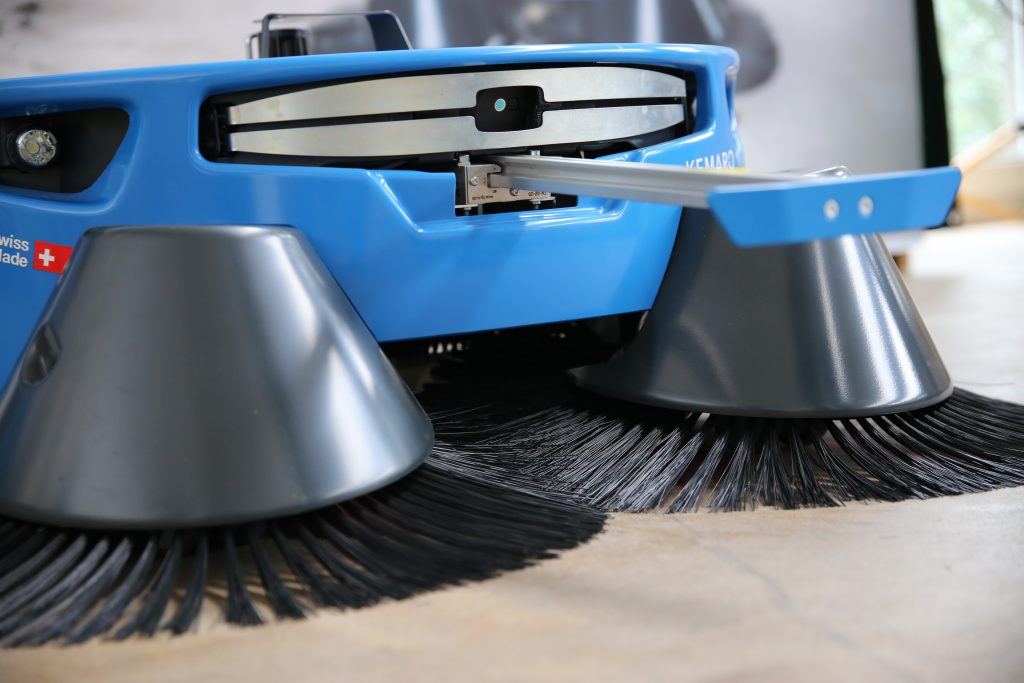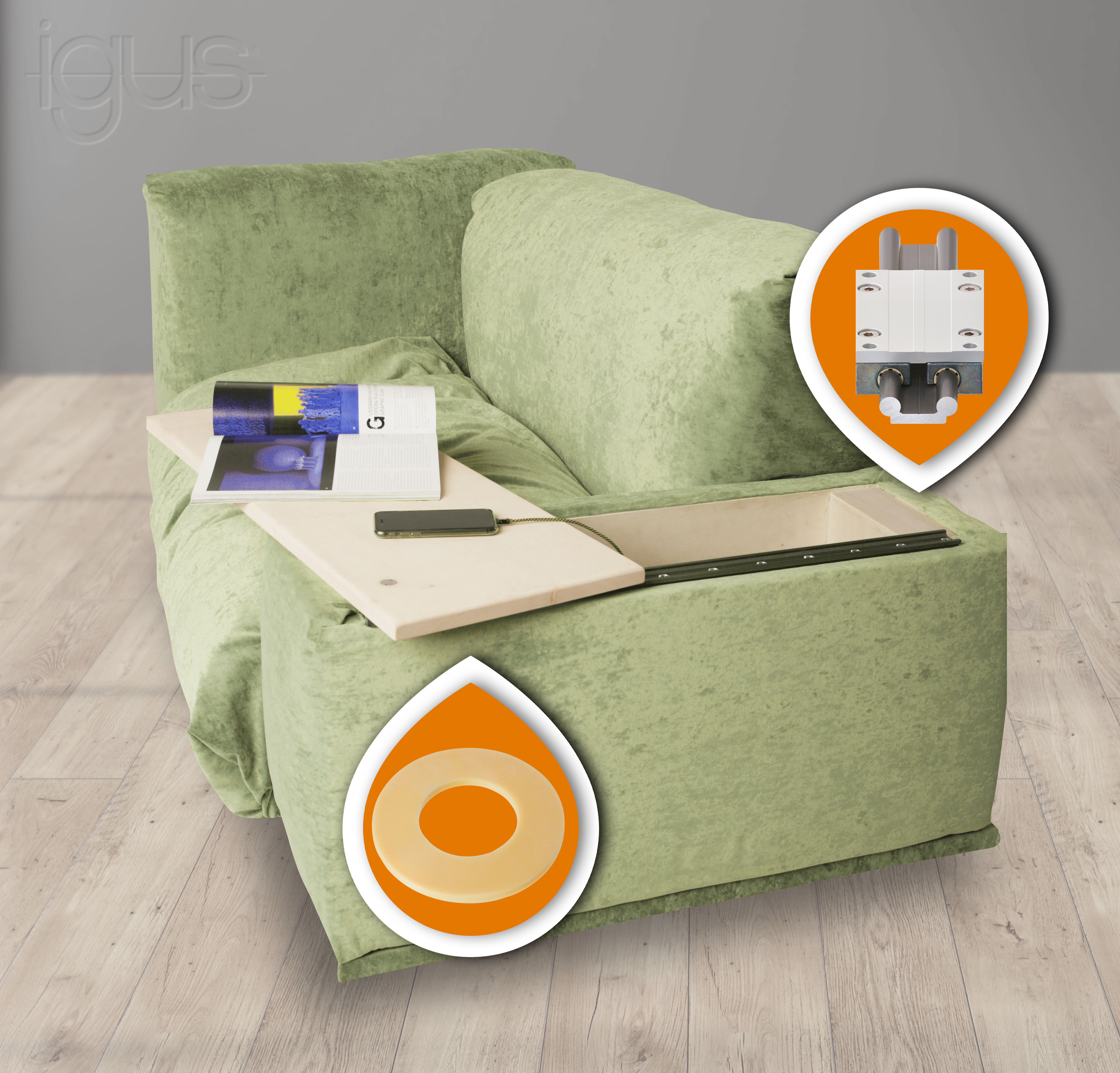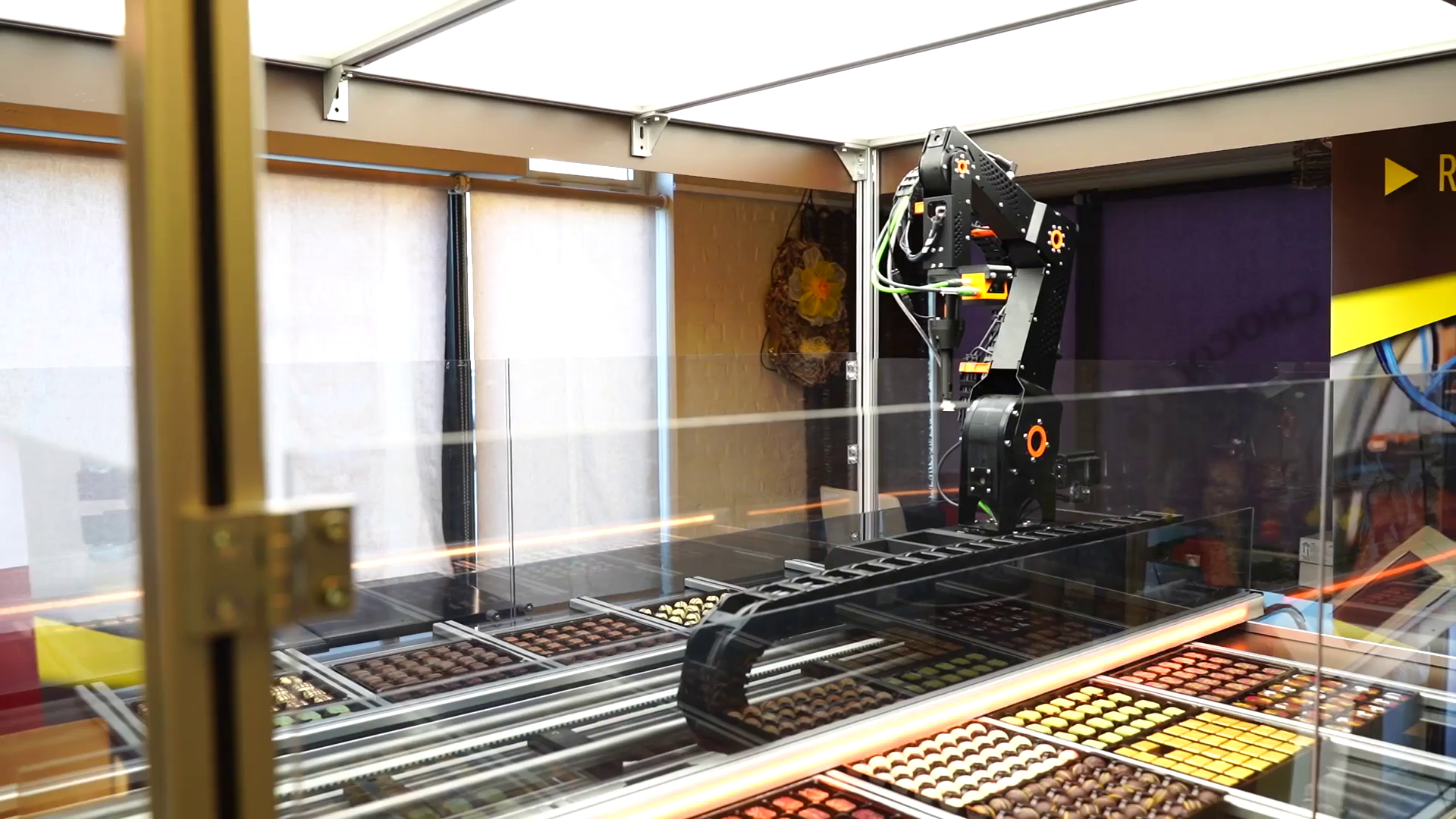Autonomous cleaning robot runs even cleaner with drylin linear bearings
Autonomous cleaning robot runs even cleaner with drylin linear bearings
Self-lubricating drylin® linear guides ensure smooth operation of the K900 cleaning robot from KEMARO AG
The K900 industrial robot cleans floors wherever it needs to, autonomously and without programming, even in places where it is potentially dangerous or even impossible for people to clean. Self-lubricating linear guides, shafts, plain bearings and fixed flange bearings from igus® all play a crucial role in the robot’s mechanics.
Three Swiss engineers; Armin Koller, Thomas Oberholzer and Martin Gadient, founded KEMARO AG in August 2016 to develop autonomous robots. With the K800, the young company from Eschlikon, Thurgau launched the world’s first autonomous dry-cleaning robot for industrial use. “We wanted to develop a product that the world needed, was technically mature, improved the cleaning process and helped save money and time – thus the idea of an industrial cleaning robot was born”, says Martin Gadient, co-founder of KEMARO AG and in charge of the Mechanics & Production division. The 13-person company launched the successor model K900 in 2020.
Plug in, load and clean
Whether it’s a warehouse, production facility or industrial plant, the K900 cleans without chemicals or water, leaving the floor clean and – crucially – dry. Due to its low installation height, the robot cleans even in places that are hard to reach or potentially dangerous for people to access. Commissioning is very fast and easy and requires little to no preparation time or programming.
The user simply places the K900 in the desired location, plugs it in, charges it and the autonomous cleaning can begin.
“Companies save massive cleaning costs with a K900,” says Gadient. “They also protect the health of employees by reducing fine-dust pollution and dispensing with chemical cleaning agents. Another plus is that a cleaning robot allows the workforce to concentrate fully on their value-adding activities again”.
The sweeping robot is designed for cleaning areas up to 10,000m2. It has a battery run time of up to five hours, an integrated dust extraction system, a cleaning width of 90cm and a dirt container with a capacity of 35 liters. “As it travels, our robot creates its own cleaning map, identifies and bypasses fixed and mobile objects, and cleans its environment completely independently,” says Gadient. “In the case of cleaning robots for industry, we are currently the only company in the global market that can simply place the robot in a room and start it at the push of a button. There is no need for prior space measurement or teach-in”, the co-founder adds. To make the robot mobile, it has a trolley handle that is guided cleanly, strongly and safely with a drylin® T linear guide from igus.

Self-lubricating and maintenance-free linear guides made to measure
Martin adds: “From my past work as a development engineer, I already knew the products from igus, and my experiences with them had always been good. For our size and the confined space conditions, we needed a strong and robust linear guide that was made-to-measure. We contacted igus and a short time later, we ordered a sample of the desired linear guide for testing from their website”. Axel Ebert, Key Account Manager Bearing Technology at igus Switzerland, adds: “You can easily order a sample guide from us via our website – also made-to-measure from customer drawings. Due to the required strength, we decided on a drylin T linear guide in HD (heavy-duty) version in coordination with KEMARO AG.”
Profile guides of the drylin T type are dimensionally identical to the usual lubricated ball guides. In contrast, noise is reduced with the drylin T guides, as is the surface pressure due to the larger contact surface between the guide and the profile rail. In the heavy-duty version, the slides have a very firm hold in the carriage body. The drylin T carriage guides can handle loads up to 14,000N, are extremely resistant to dirt and have a very long service life. “That’s another advantage of igus products – they’re all [self-lubricating] and therefore ideal for our application. The customer never has to lubricate, so no dust sticks to the guides and no abrasive paste can form”, says Gadient. Aluminum is used for the shaft material. “At first we had a chrome steel shaft that we kept having problems with,” says Gadient. “Axel Ebert then suggested an aluminum shaft from the igus portfolio. Initially I was very skeptical, but after the first test I was completely thrilled. It is both lighter and also easier to assemble and works perfectly”. For more self-lubricating benefits: in addition to the carriage guidance, the fixed flange bearings, plain bearings and thrust washers from igus are also used in the robot.
“Our igubal® spherical bearings, which are used in the roller brush bearing, are maintenance-free, self-aligning bearing elements made entirely of plastic. In addition, the entire igubal joint system is resistant to dust, dirt and corrosion, and 80% lighter than metal bearings”, says Daniel Henlin, Sales Manager at igus Switzerland, emphasizing the advantages of spherical bearings made of high-performance plastics.
Conclusion
By using the igus self-lubricating bearing technology, the directors at KEMARO AG were able to make their autonomous sweeping robot quieter, more robust, lighter and also more durable. Plus it requires less maintenance. “The collaboration with igus is as we hoped – the advice is top class and the price-performance ratio is right. But above all, the quality of the product is convincing, and this in turn increases the quality of our product”, concludes Martin Gadient.
Looking to implement drylin linear guides in your next application? Contact a drylin expert today, or call us at (800) 521-2747.



